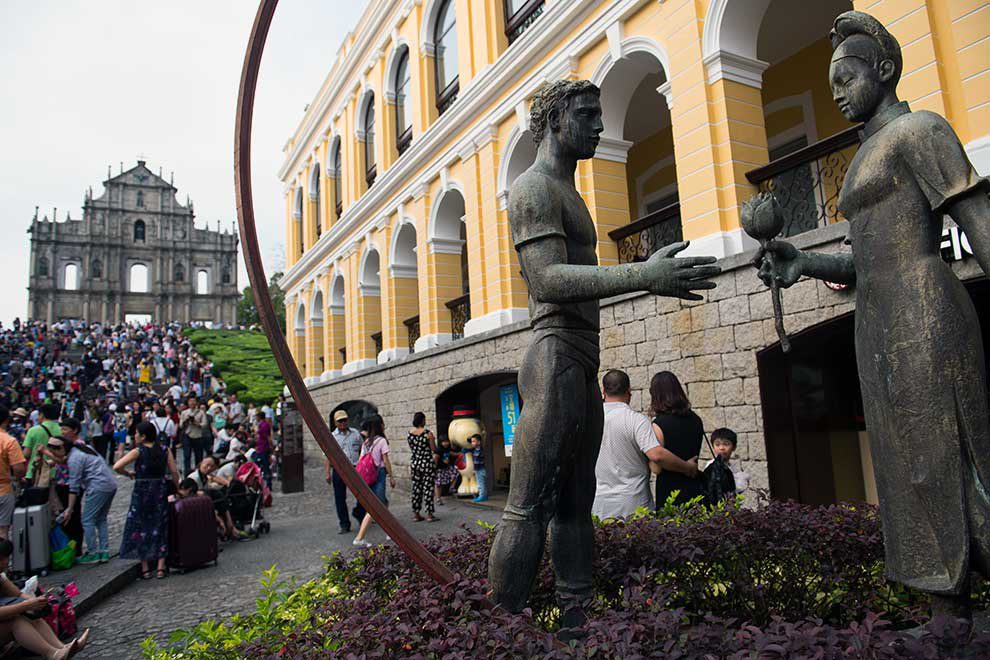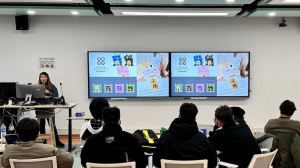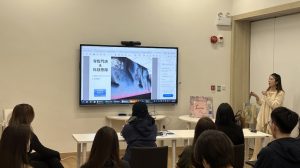The relevance of Macao’s cultural heritage goes well beyond the physical elements of the buildings and public squares featured in UNESCO’s World Heritage List, and the city’s Government should do more to ensure the preservation of the ‘spirit of place’ they engender. So says a discussion paper by IFT scholar Dr. Sharif Shams Imon. It defines ‘spirit of place’ as characteristics “that make the place special from both [a] heritage and tourism perspective”.
Since the World Heritage List inscription of the Historic Centre of Macao in 2005, “the main focus shifted from conservation-restoration to maintenance and to ensure the stability of the structures, without addressing many of the visitor-related heritage management issues, such as heritage interpretation and site presentation,” Dr. Imon wrote. “During the same period, crowding surrounding the sites has become a major problem and certain sites have lost their traditional socio-economic settings significantly and become very ‘touristy’,” he added.
Dr. Imon noted that individual cultural items in Macao such as traditional festivals “have been selected, packaged and promoted for tourism purposes, turning what used to be embedded in the traditional belief system into tourist spectacles”. The scholar added that, “unfortunately, the Macao Government’s tourism promotion activities’ treat heritage sites primarily as ‘tourist attractions’.”
His paper, “Cultural heritage management under tourism pressure”, was published in the Worldwide Hospitality and Tourism Themes academic journal in 2017. It included 3 case studies involving UNESCO World Heritage sites in Asia: Macao; Luang Prabang, in Laos, a site featuring an ensemble of traditional Lao residential and religious architecture and 19th– and 20th-century European colonial-style buildings; and the Old Town of Lijiang, in Mainland China’s Yunnan Province, renowned for its architecture in the local style, for its arts and crafts, and its ancient system for water supply.
Many changes
Dr. Imon noted in his Macao case study UNESCO’s previous observation that the core value of the city’s historic centre was “not solely its architecture, the urban structure, the people or their customs but a mixture of all these.”
The IFT scholar said many changes had taken place in Macao’s tourism sector since the early 2000s, linked to factors including the liberalisation of the casino industry in 2002 and the city’s UNESCO World Heritage List inscription. In the years since there had been a rapid expansion in the volume of visitor arrivals, from 18.71 million in 2005, to 30.71 million 10 years later, according to Government data.
“Apart from fast tourism infrastructure development, tourism growth has impacted Macao in several other ways,” Dr. Imon wrote.
He added: “New casino resorts offered thousands of low-skill jobs, mainly as croupiers, with much better pay than the conventional jobs available elsewhere in Macao… Small businesses found it difficult to continue, as they could not compete with the salaries being offered by big companies and most local shops had to move out of Senado Square, the city’s main public square within the World Heritage site, because of increased rent triggered by high demand for tourism retail space in the area. Now, the area is dominated by international-brand shops and crowded with shopping tourists.”
Dr. Imon also highlighted a growing problem for Macao’s heritage sites: overcrowding. “This issue is often treated as a visitor safety- or comfort-related problem. But in the case of cultural heritage, overcrowding has a deeper impact,” he said. “Interpretation is considered an important way to help others to understand the value of heritage. By making access to heritage difficult and limiting the time to appreciate a heritage [site], overcrowding makes meaningful on-site interpretation almost impossible.”
According to the IFT scholar, “the lack of good interpretation seems to be affecting Macao’s heritage tourism.”
Dr. Imon noted that a longitudinal study of tourist satisfaction by the IFT Tourism Research Centre showed a decline in tourists’ satisfaction with heritage attractions in Macao between 2009 and 2016. The “worst” decline in tourists’ satisfaction was in the other sectors covered by the study, including non-heritage attractions, events, transportation and restaurants.
“The study does not look at the causes of such changes; however, long-term observations of heritage management practices in Macao points to weakness in 3 areas – heritage interpretation and site presentation, visitor management, and visitor facilities,” Dr. Imon said. “The quality of these 3 is paramount not only for visitor satisfaction but also for achieving one of the key objectives of conservation: transmitting the knowledge of heritage to current and future generations.”
Dr. Imon wrote in his paper’s conclusions that “a failure to understand the socio-cultural impacts of tourism properly has resulted in serious gentrification at most historic urban areas and loss of intangible heritage.”
He added: “A historic urban centre’s social value lies in the way of life of its residents, in its arts and crafts, language, food, festivals, other traditional activities, etc. These different forms of intangible heritage are very much dependent on the native population for their continuity and on the physical setting for their proper functioning.”
The IFT scholar pointed out that governments – “as custodians of major cultural and natural tourism resources” – should develop and enforce integrated tourism planning and management systems to ensure the ‘spirit of place’ in historic centres is not lost. “However, a government’s ability to exercise the power effectively depends entirely on its institutional capacity,” he added.
More info
Dr. Imon holds a Ph.D. in Urban Conservation from the University of Hong Kong. He also holds an MBA and degrees in Urban Planning and Architecture.
He specialises in cultural heritage and tourism management, and is a member of 6 professional organisations. Dr. Imon has been a consultant to several United Nations bodies and many governments, and has conducted professional training programmes internationally. One of his training manuals on cultural heritage management has been translated into 7 languages.
https://doi.org/10.1108/WHATT-02-2017-0007









